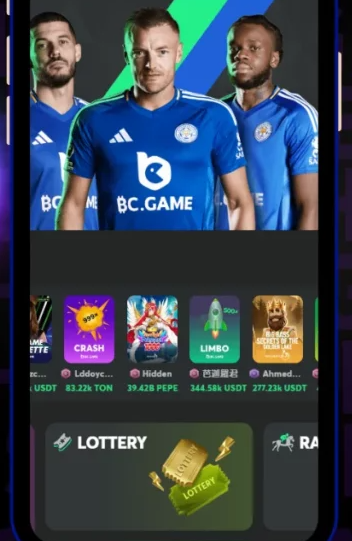Best Real time Online casinos in the us Best Real time Specialist Video game
February 20, 2025Publication out of Ra Magic Enjoy 100 percent free Arabic-Styled Slots Online 2025
February 20, 2025
The Rise of Hash.G in the Blockchain Gaming Revolution
In the fast-evolving landscape of blockchain technology, innovations such as Hash.G are beginning to capture significant attention. This cutting-edge platform showcases the transformative potential of integrating blockchain mechanics into gaming, resultant in exciting new opportunities for developers and gamers alike. As the digital age continues to expand and evolve, the spheres of blockchain and gaming are merging, giving rise to novel platforms like Hash.G that promise to change the way we think about digital interaction.
Located at the crossroads of decentralized finance (DeFi) and online entertainment, Hash.G leverages the inherent advantages of blockchain technology to create a gaming experience that is not only secure but also incredibly engaging. Its unique blend of transparency, fairness, and player autonomy underscores the potential of blockchain to redefine traditional industries and offer new horizons of opportunity for both creators and consumers.
An Introduction to Hash.G
Hash.G represents a dynamic shift in the blockchain gaming ecosystem, providing a platform where players can engage in a variety of interactive, rewarding experiences. The platform operates on the principle of decentralization, ensuring that no single entity can exert control beyond what is fair and collectively agreed upon by its community. This decentralized approach translates into enhanced security, reducing the risk of fraud or unfairly manipulated outcomes.
The architecture of Hash.G is built on blockchain technology, which offers a transparent ledger system. This ensures that all transactions, game outcomes, and collective decisions are recorded in a way that is immutable and accessible to all participants. As a result, players are empowered with a greater sense of trust and engagement, knowing that the games they play and the rewards they earn are backed by a rigorous, transparent system.
The Technological Backbone
At its core, Hash.G leverages advanced blockchain protocols to facilitate an ecosystem where gaming is not only entertaining but also underpinned by financial incentives and collectible assets. These attributes are delivered through the power of smart contracts, which handle transactions automatically based on pre-set, community-agreed rules without the need for intermediaries.
This use of smart contracts ensures that every aspect of the gaming process—from gameplay outcomes to the distribution of rewards—is executed seamlessly and without bias. Furthermore, by employing hashes for cryptographic verification, Hash.G provides a double assurance of security and transparency, key elements that set it apart in a competitive landscape.
Another notable feature of the Hash.G ecosystem is its adoption of non-fungible tokens (NFTs). In-game assets and rewards can be tokenized, allowing players to truly own and potentially trade their digital possessions. This integration not only adds an extra layer of engagement but also opens up new revenue streams and strategies for gamers and developers alike.

Transforming the Gaming Experience
Hash.G is more than just a technological marvel; it represents a paradigm shift in how games are developed, distributed, and monetized. The platform exemplifies a move away from conventional, centralized gaming models towards a more player-centric approach. One of the profound impacts of this shift is the democratization of gaming—where the barriers to entry are lower and the potential for earning is higher.
One of the key innovations of Hash.G is its forum-like community features, promoting active player engagement. Players have the ability to participate in governance decisions, voting on features, and changes, thereby influencing the direction of the platform. This sense of community ownership is a testament to the empowerment that blockchain offers, making each player a stakeholder in the gaming universe they inhabit.
Moreover, traditional gaming economies, often seen as confined ecosystems, are expanded through Hash.G. Players can earn real-world value through digital play by participating in economically inclusive systems. The idea that time and skills spent in-game can translate into tangible financial benefits is revolutionizing the gamer’s motivation and scope.
Hash.G: Challenges and Opportunities
While Hash.G offers a multitude of benefits, this innovative platform also faces challenges. The first is the volatile nature of cryptocurrencies, which can impact player earnings and the perceived value of in-game assets. This volatility requires strategic mechanisms to ensure stability and trust within the community.
Additionally, as with any burgeoning technology, regulatory concerns arise. Blockchain gaming platforms like Hash.G must navigate the intricate global landscape of digital asset regulation. Ensuring compliance while maintaining the decentralized ethos presents both a challenge and an opportunity for pioneers in this space.
Yet, these challenges can be parlayed into opportunities for growth and innovation. Developing hybrid models that blend some traditional financial safeguards with the advantages of decentralization could help strike a balance, offering stable yet innovative structures attractive to mainstream audiences.
Further, the ongoing evolution of blockchain scalability solutions promises to resolve issues with network congestion and transaction speed, paving the way for smoother user experiences on platforms like Hash.G.
The Future Outlook
As we look to the future, the potential applications and impacts of Hash.G are profound. Both the blockchain and gaming industries are on trajectories of rapid growth, and their intersection is likely to produce even more innovative developments. The role of Hash.G in these developments cannot be understated; it stands as a testament to the potential of blockchain technology to transform not only how we play games but also how we think about digital ownership and decentralized systems.
By continuing to innovate and adapt, platforms like Hash.G could redefine what it means to engage with the digital world. They promise not only immersive experiences but also equitable returns for time and talent invested by users. As user autonomy increases and technology becomes more intuitive, the lines between reality and virtual engagements may blur, heralding a new age of interconnected digital interaction where technology meets imagination seamlessly.
In conclusion, Hash.G embodies the innovative spirit of blockchain technology and represents a bold step in the evolution of digital gaming. Its potential to influence and inspire goes beyond traditional gaming paradigms, promising to usher in a new era of engagement and empowerment in the digital sphere.
